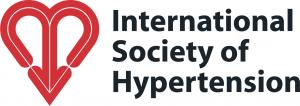Devices such as cuff-less wrist monitors are likely to play an important role in future – but several challenges remain before they can be introduced widely.
LONDON, UNITED KINGDOM, September 9, 2024 /EINPresswire.com/ — New blood pressure measurement devices such as cuff-less wrist monitors are likely to play an important role in hypertension diagnosis and management in future – but several challenges remain before these new technologies can be introduced widely, according to a new position paper from the International Society of Hypertension (ISH).
A key challenge is that these new devices are not yet as accurate or reliable as existing blood pressure monitors.
The position paper – published in the Journal of Hypertension – looks at the evidence around the accuracy, validation and clinical utility of new kinds of blood pressure monitors and other innovations in hypertension.
The paper was developed by a panel of experts from eleven countries worldwide, led by Professor Kazuomi Kario of Jichi Medical University, Japan. It is endorsed by the World Hypertension League, the European Society of Hypertension, the Asian Pacific Society of Hypertension, and the Latin American Society of Hypertension.
Blood pressure is measured with the use of an upper arm cuff. It can be measured automatically with a machine, or manually by a healthcare professional. But these existing methods have disadvantages. They only provide static measurements, are cumbersome to use, and they are not perfectly accurate.
There is consensus that new measurement methods are needed, and these are being developed, including:
– wrist-worn devices with no cuff
– smart rings
– use of smartphone cameras
– finger-cuffs.
These monitors have the potential to enable measurement of blood pressure continuously and in many more circumstances. For example, they could be combined with technology which tracks the wearer’s movement and stress levels, and ambient temperature.
New measurement devices could also work in conjunction with apps and other digital technologies which make it easier for people to share blood pressure readings with their doctor.
And data collected digitally could be used in new kinds of blood pressure research.
Professor Kario said: “These new technologies have huge potential to improve measurement of blood pressure. The challenge at the moment is that they have not yet demonstrated the same accuracy or reliability as existing measurement methods – regardless of their clearance by some regulatory authorities.”
One issue is that cuff-less devices are unable to measure the force of blood in blood vessels directly. They rely on indirect measures of blood pressure. For this reason, it is challenging to make sure they will be accurate for everyone using them.
Prof Kario added: “If these challenges can be overcome, measurement of blood pressure could be radically improved.”
Professor Bryan Williams, President of the International Society of Hypertension, said: “There has been a bewildering increase in all kinds of different types of devices for measuring blood pressure. As our paper emphasises, we are not yet at the point where we can rely on many of these new approaches to blood pressure measurement for clinical use and we can’t yet recommend them to our patients.
“I expect the technology to develop over time, to make blood pressure measurement more convenient and reliable, which will be of benefit to our patients. In the meantime, a more fundamental challenge remains, which is to make sure we are detecting high blood pressure using existing and well validated monitors. High blood pressure is silent and dangerous, so patients should make every effort to get their blood pressure checked because if it is high, we now have very effective ways to reduce blood pressure, and this dramatically reduces the risk of heart disease and strokes and prevents premature death.”
Professor George Stergiou, Secretary and President-Elect of the International Society of Hypertension, said: “The way to make sure new measurement devices are accurate, reliable, and acceptable to patients is for researchers and commercial providers to work together on their development and proper validation. Hypertension guidelines, blood pressure validation experts, regulatory bodies, clinicians and healthcare providers all need to be aligned so that these new devices can be successfully implemented in future in healthcare for improving hypertension diagnosis and management.”
Secretariat
International Society of Hypertension
email us here
Visit us on social media:
LinkedIn
X
Facebook
Legal Disclaimer:
EIN Presswire provides this news content “as is” without warranty of any kind. We do not accept any responsibility or liability
for the accuracy, content, images, videos, licenses, completeness, legality, or reliability of the information contained in this
article. If you have any complaints or copyright issues related to this article, kindly contact the author above.
![]()






